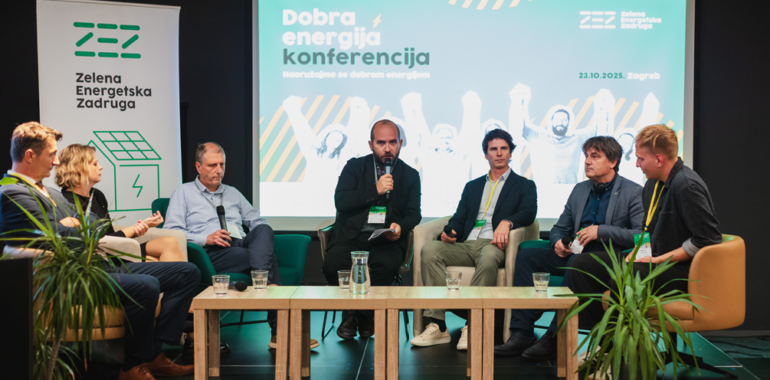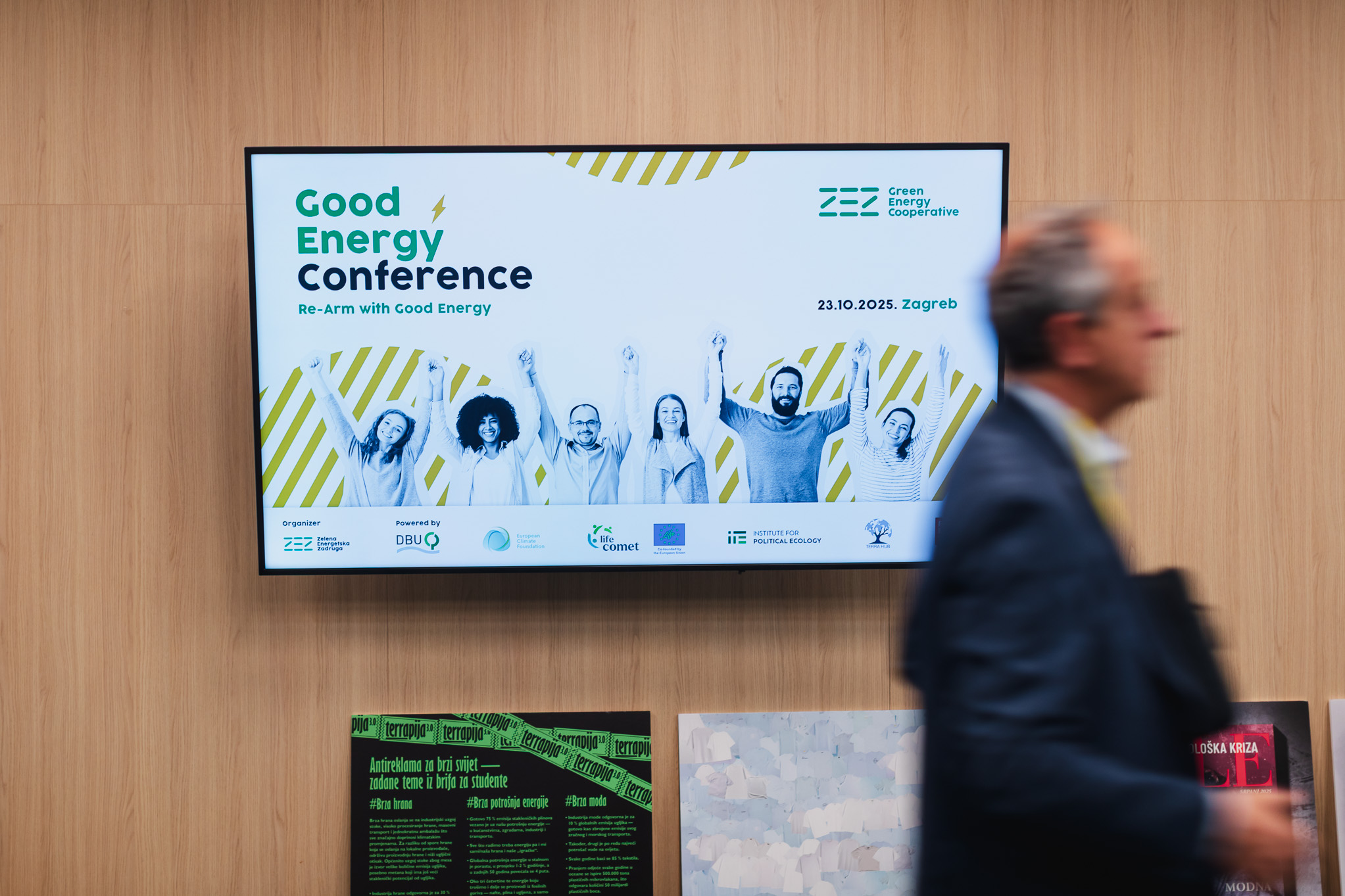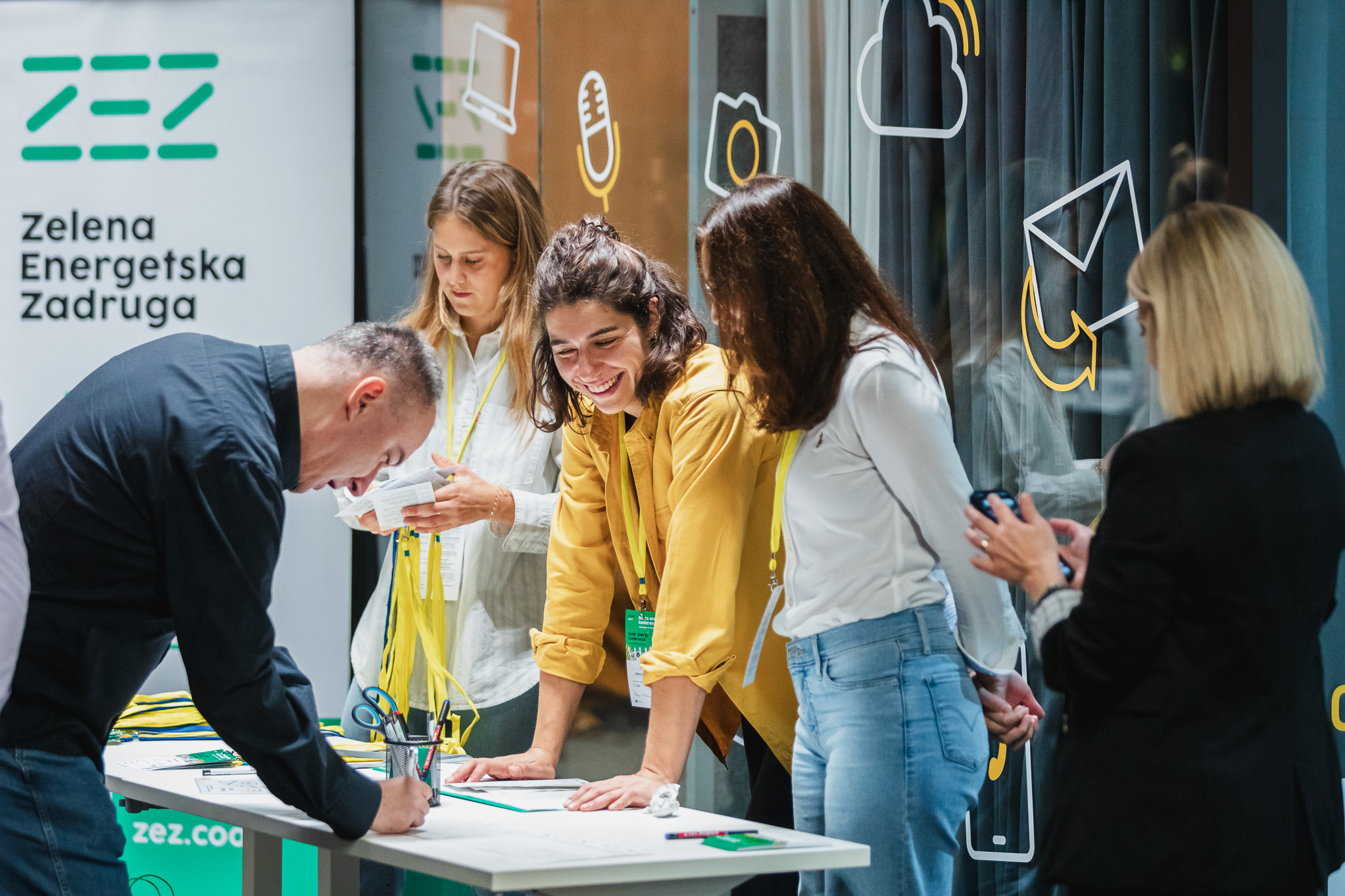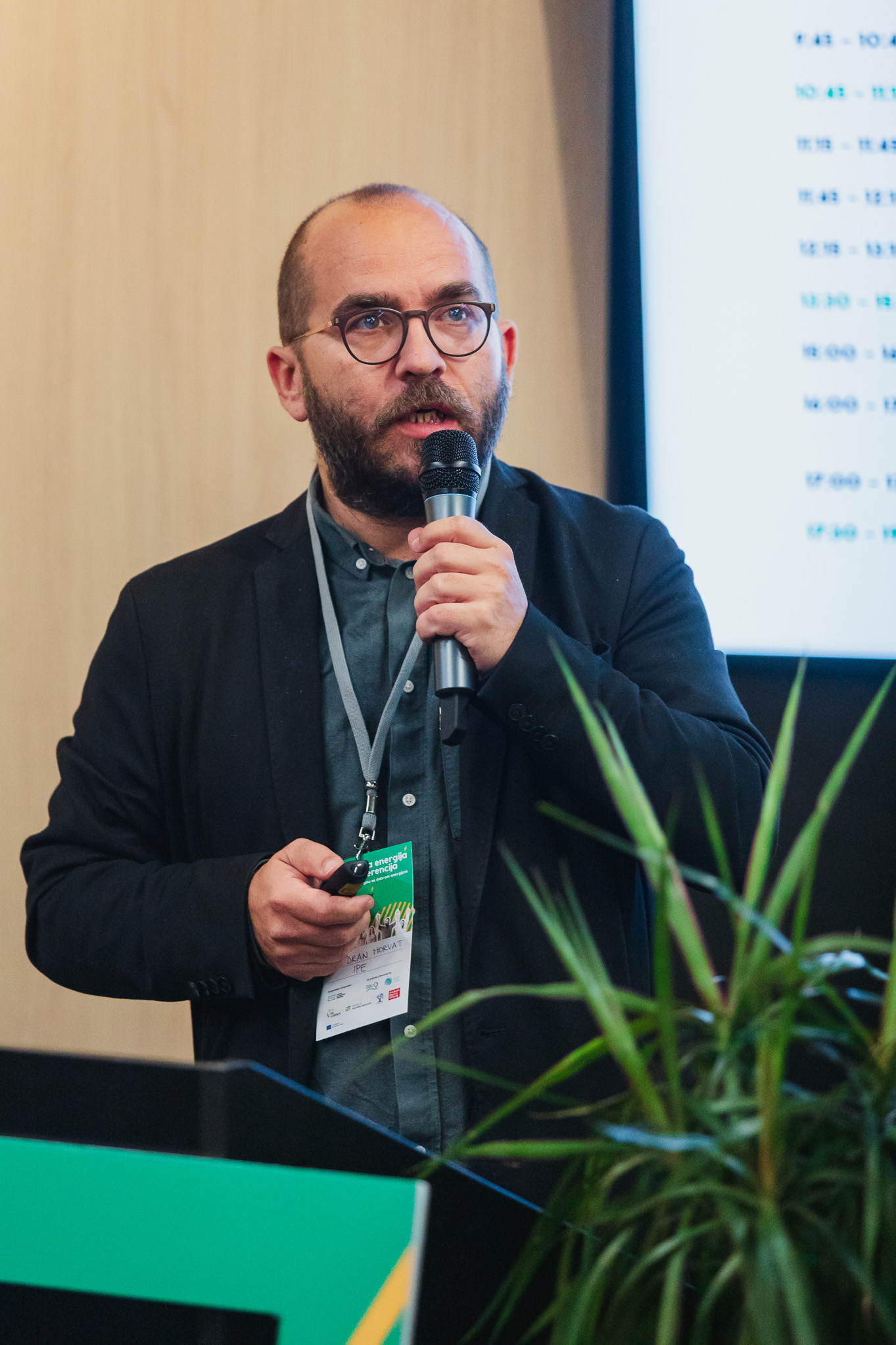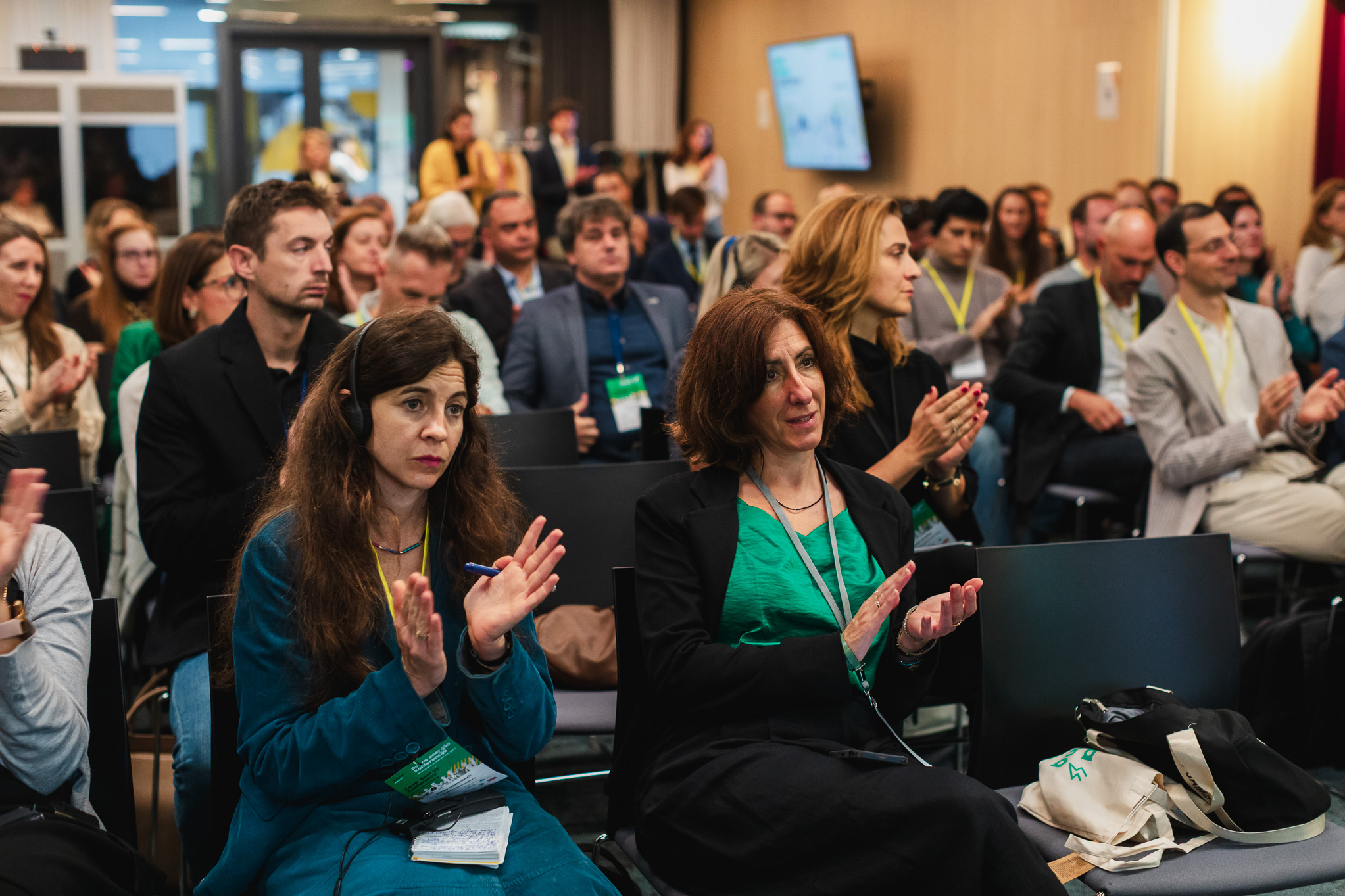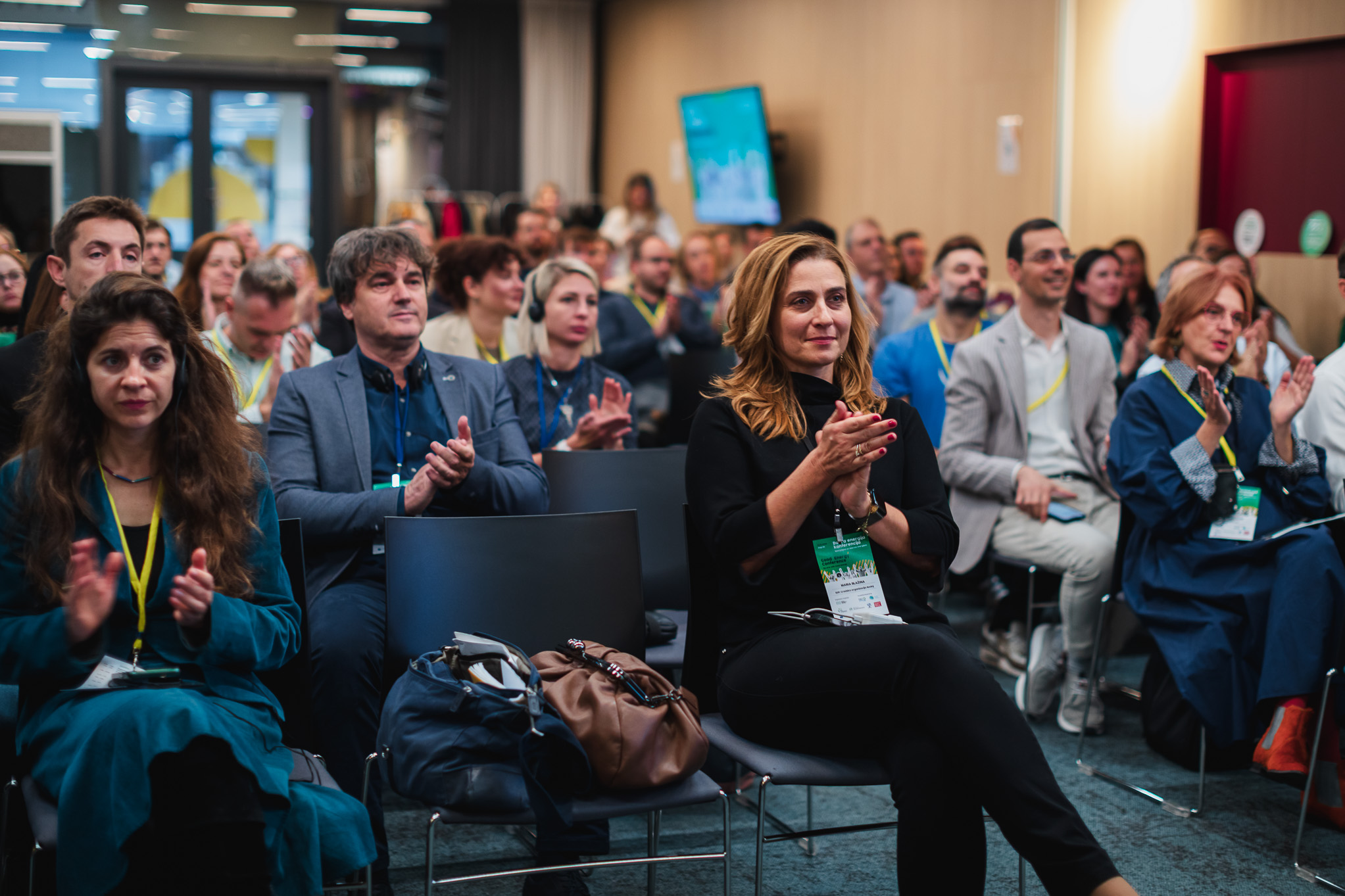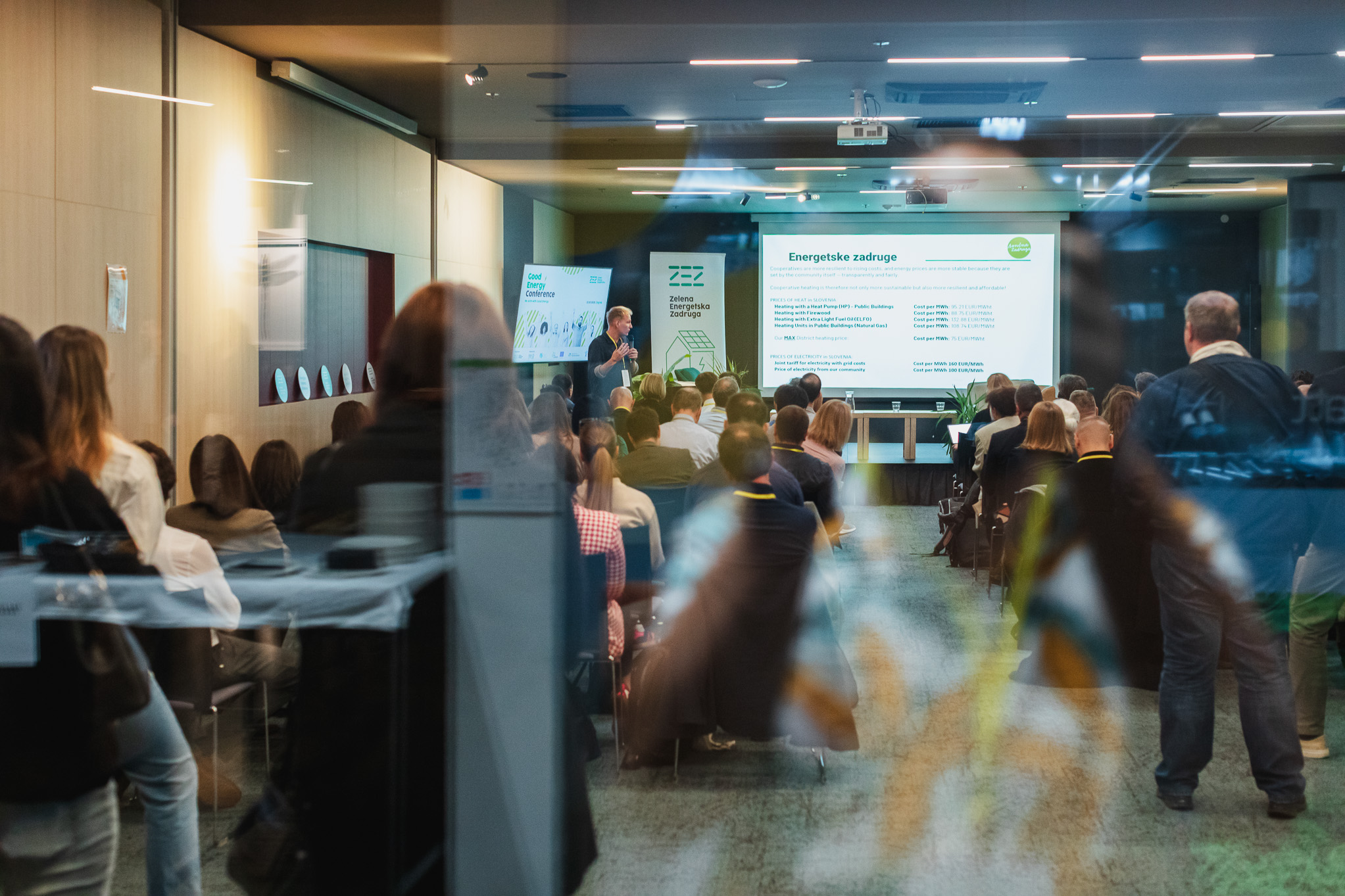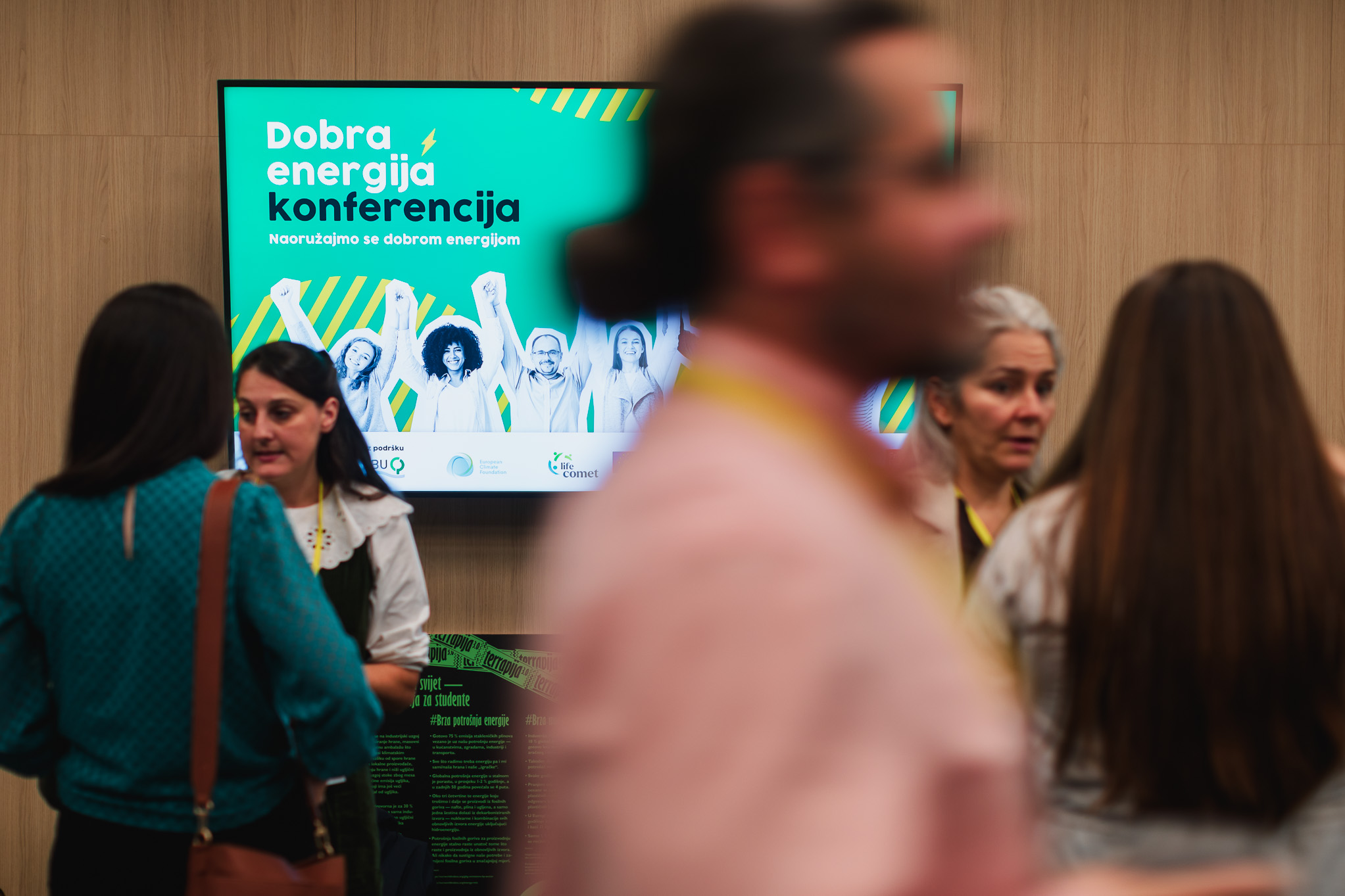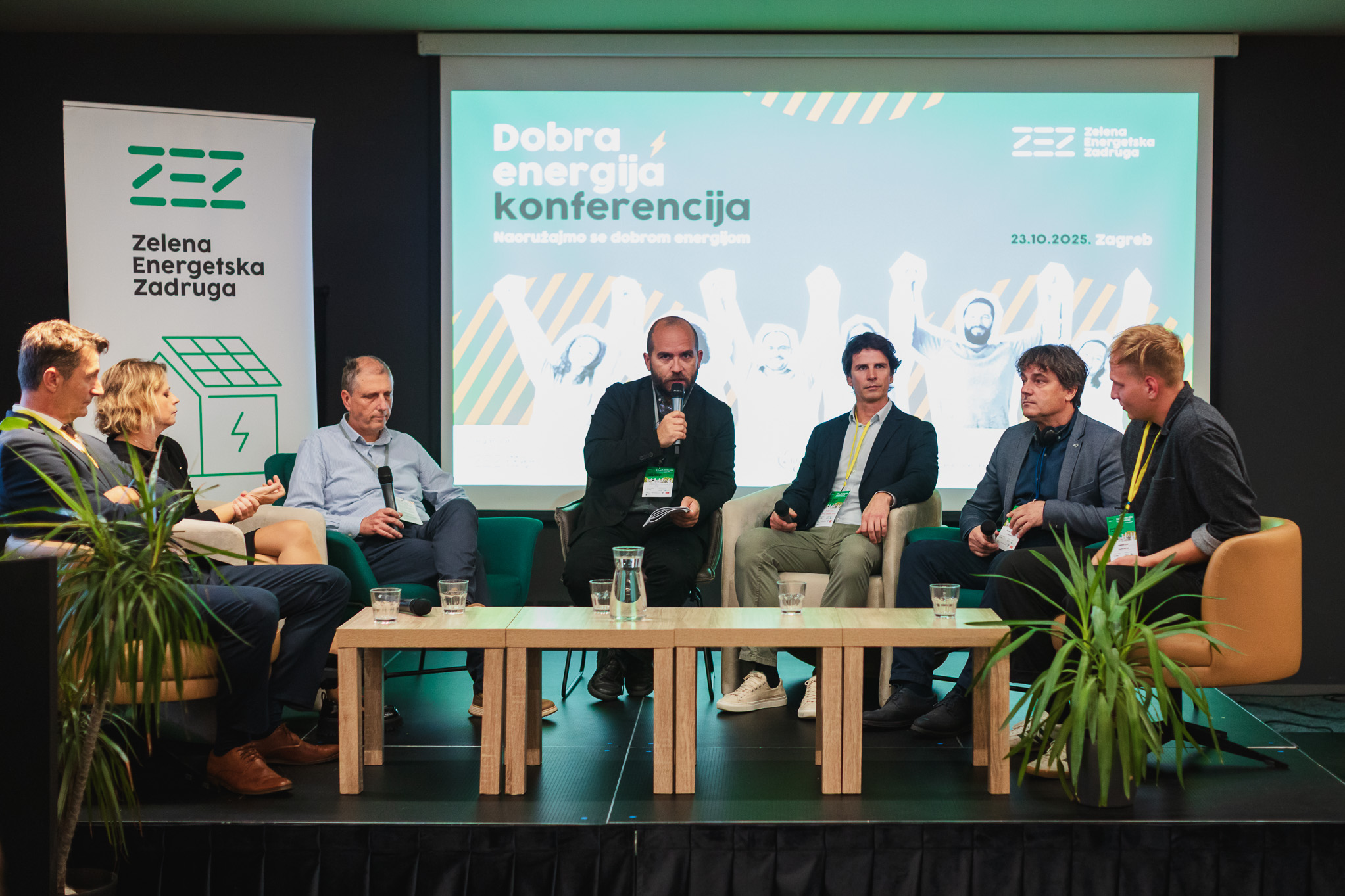Citizen energy communities are the brightest spot of our reality, because of the benefits and social cohesion they bring to local communities beyond produced energy itself. They are one of the key tools through which citizens are directly activated in the energy transition, thereby strengthening the security of energy supply, local resilience, and local economic and industrial development. In times of crisis, it is particularly important to re-arm with good energy.
These were the key messages of the Good Energy Conference, the third in a row, held on 23 October and organised by Green Energy Cooperative (ZEZ) with the support of partners — the Institute for Political Ecology (IPE), Terra Hub and Friedrich Ebert Foundation (FES) in Zagreb.
Vedran Horvat presented the Fast Forward Action project and moderated the panel discussion What do we need to upscale, replicate and accelerate community energy in SE Europe?
How energy communities work in practice across Southeast Europe was discussed openly and directly — through presentations, panel discussions, and informal exchanges at a conference that brought together energy communities, projects and initiatives from the region. Experiences were shared — both the good and the challenging ones — from Sončna zadruga in Slovenia, Elektropionir and Magdon Energy Housing Community in Serbia, to pilot renewable energy community initiatives of public institutions from Kakanj, Modriča, and Mostar in B&H. Croatian energy communities also presented their work — Apsyrtides from Cres, SAVA, the Energy Community of the Northern Adriatic, Križevci cooperative KLIK, and ZEZ Sun.
Positive experiences of national-level support mechanisms, as well as models proving that it can be done, were also shared from Slovenia, the Czech Republic and Austria. If the main actors of citizen energy in the region had a magic wand, their common vision for the future could be summarised in these five key points:
- Forming an energy community among residents in the same building or neighbourhood should be simple — possible online or via an app, within just a few clicks, as it already works in Austria.
- Sharing surplus energy among community members must be practically enabled, not just on paper, and should make economic sense. A centralised technical system for energy-sharing accounting has been successfully introduced in the Czech Republic.
- Public rooftops should be put to use with solar installations co-financed and shared by citizens, similar to the concept of public urban gardens — examples exist in Slovenia and Austria.
- For citizens at risk or living in energy poverty, a defined quota of shared/available energy should be provided by energy communities. A good example of this exists in Brixton, UK.
- Following Ireland’s example, energy communities i.e. small market actors should have a defined grid capacity quota to prevent them from being “swallowed” by large producers booking massive grid capacities.
It’s High Time the System Supported Citizens Who Want to Share Energy
In Croatia, both citizens and entrepreneurs as market players are ready to share knowledge and experience and many are already actively involved in energy communities. The Croatian Energy Community Forum today brings together 17 initiatives with more than 250 members, while over 1,000 citizens have already expressed interest in energy sharing. All of this confirms a genuine potential and readiness for the growth of community solar markets.
The financial support for the Conference has been provided by the German Federal Environmental Foundation (DBU), European Climate Foundation (ECF), and EU Life COMET Project.
